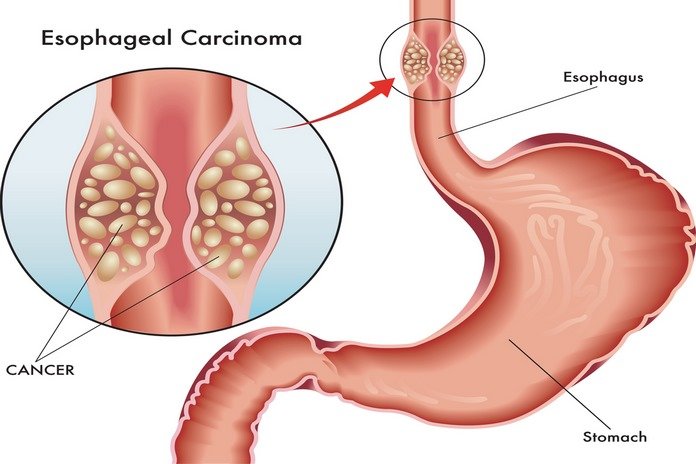Esophageal Cancer Metastasis

Due to the increased frequency of distant metastasis in patients with esophageal cancer, it is important to define the accurate pattern of its spread. The studies reveal that there are site-specific patterns of distant metastasis that happen in the two major histological types of esophageal cancer. Therefore, it indicates a need for more tailored and rigorous pre-treatment imaging evaluations in separate histological subtypes, particularly for people with advanced stages of esophageal cancer.
Similar to the previous studies that include patients with distant cancerous cells with an initial diagnosis or who develop distant metastasis during follow-up treatment, the liver was the most common site of distant metastasis for esophageal cancer throughout the body. Along with the liver, there was distant metastasis in the lungs, bones, lymph nodes, and brain. Until now, the patterns of distant metastasis in adenocarcinoma and squamous cell carcinoma patients have poor description and understanding.
Another study found that patients with adenocarcinoma were more prone to develop liver metastasis than patients with squamous cell carcinoma with no potential difference in metastasis to lungs, bone, or brain. Moreover, another research also reports that adenocarcinoma patients have a higher incidence of liver metastasis than squamous cell carcinoma. However, these past studies have limited sample sizes and a lack of data on population basis. The specific studies on stage 4 esophageal adenocarcinoma and squamous cell carcinoma indicate that liver metastases are more common in patients having esophageal adenocarcinoma.
In addition, people with esophageal carcinoma present more often with brain metastasis, whereas people with squamous cell carcinoma have a higher rate of lung metastasis. Although the bones and lymph nodes are other common sites of distant metastasis. There were no apparent differences in the rates of bone metastasis and distant lymph node between squamous cell carcinoma and adenocarcinoma. Regional lymph node status is an independent risk factor for the incidence of distant lymph node metastasis. Though there is no association of risk factors with bone metastasis.
On the whole, the findings support the notion that the different histological subtypes of early esophageal cancer show distinct patterns of distant metastasis. The brain on the other hand stays a rare site of metastasis for esophageal cancer patients. The higher incidence of brain metastasis in present years could be due to more sensitive and precise imaging modalities along with improved survival rates. A study reported that almost seven of the 53 patients with esophageal cancer develop brain metastasis during follow-up. However, some studies involve the investigation of the frequency of brain metastasis in various histological types of esophageal cancer.
Studies from western countries show that adenocarcinoma accounts for 70 to 90% of cases of brain metastasis in comparison to only 9 to 30% of cases of esophageal squamous cell carcinoma patients. However, some studies in Asian countries including China and Japan indicate that almost 80 to 90% of the cases of brain metastasis happen in esophageal squamous cell carcinoma patients as compared to 9 to 17% of adenocarcinoma patients. Due to the huge differences in the distribution of the histological types of esophageal cancer between western and Asian patients, it is hard to get a definitive conclusion on the relation between histological subtype and brain metastasis. (5)

